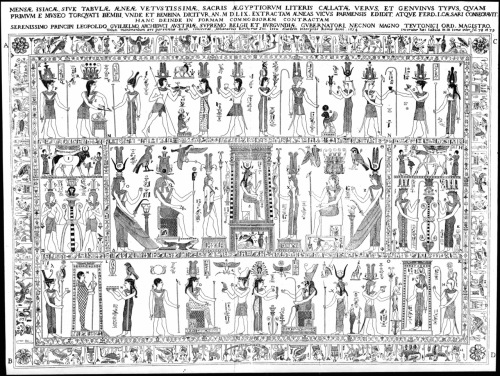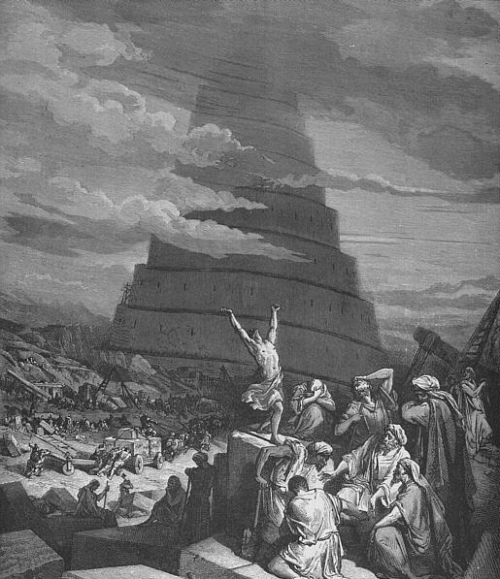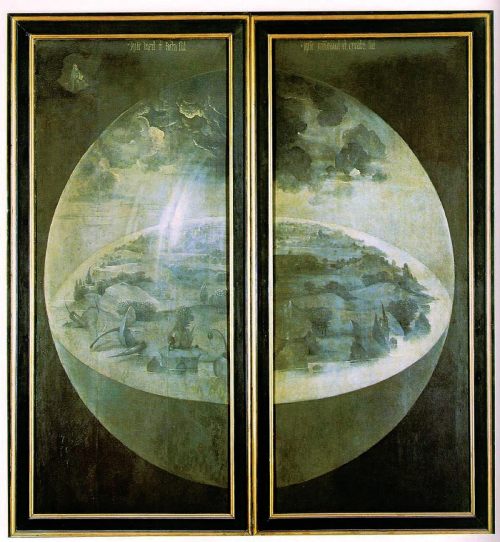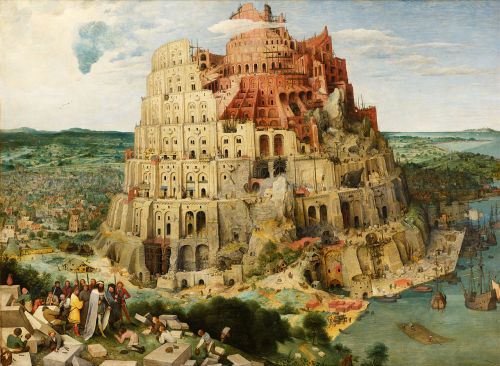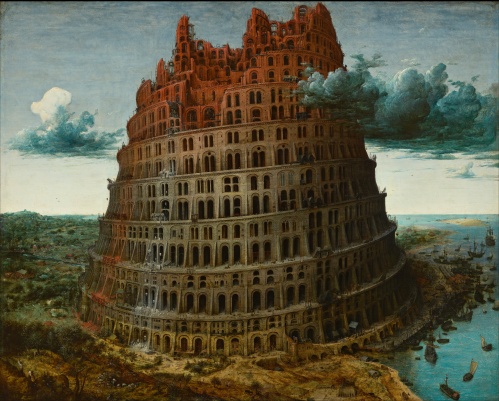Eco: Dante and Abulafia, 2

Bartolomeu Velho (d.1568), Figure of the Heavenly Bodies, an illuminated illustration of the Ptolemaic geocentric conception of the Universe, from Cosmographia, 1568. Held in the Bibliotèque Nationale de France, Paris. This work is in the public domain in its country of origin and other countries and areas where the copyright term is the author’s life plus 100 years or less.
“Yet could Dante have known the theories of Abulafia?
Abulafia visited Italy on several occasions: he was in Rome in 1260; he remained on the peninsula until 1271, when he returned to Barcelona; he returned to Rome in 1280 with the project of converting the pope.
He journeyed afterwards to Sicily, where we lose trace of him somewhere near the end of the 1290s. His ideas incontestably exercised an influence on contemporary Italian Jewish thought. We have a record of a debate in 1290 between Hillel of Verona (who had probably met Abulafia twenty years earlier) and Zerakhya of Barcelona, who arrived in Italy at the beginning of the 1270s (cf. Genot-Bismuth 1988: II).
Hillel, who had contacts in the world of Bologna intellectuals, had written to Zerakhya to ask him the question first posed by Herodotus: in what language would a child speak if it were brought up with no linguistic stimuli?
Hillel maintained that such a child would naturally speak Hebrew, because Hebrew was humanity’s original natural language. Hillel either did not know, or else disregarded, the fact that Abulafia was of a different opinion. Not so with Zerakhya.
He sarcastically remarked that Hillel had been taken in by the siren song of the “uncircumcised” of Bologna. The first sounds emitted by a child without linguistic education, he asserted, would resemble the barking of dogs. It was madness to maintain that the sacred language could be naturally bestowed on human beings.
Humanity possessed a linguistic potential, but it was a potential that could be activated only through education of the vocal organs. This, however, required instruction.
At this point, Zerakhya brought forward a proof that we shall find in a number of post-Renaissance Christian authors (for example, in the In Biblia polyglotta prolegomena by Walton in 1673, or the De sacra philosophia of 1652 by Vallesio): had there been the primordial gift of an original sacred language, then all human beings, regardless of their native tongue, would have the innate ability to speak it.
The existence of such a debate is enough to show, without needing to invent a meeting between Dante and Abulafia, that Abulafia’s ideas were subject to discussion in Italy, especially in the Bolognese intellectual circles which influenced Dante, and from which, according to Maria Corti, he absorbed his notion of the forma locutionis.
Nor does the Bologna debate constitute the only point of encounter between Dante and Jewish thought.
Genot-Bismuth has given us a vivid picture of the close of the thirteenth century in which we will later find a Yehuda Romano giving a series of lectures on the Divine Comedy for his co-religionists, a Lionello di Ser Daniele who did likewise using a Divine Comedy transliterated into Hebrew script, not to mention the surprising personage of Immanuel da Roma, who, in his own poetic compositions, seemed to launch an attack on Dante’s ideals almost aspiring to produce a sort of counter-Comedy in Hebrew.
Naturally this only establishes the influence of Dante on Italian Jewish culture, not the other way around. Yet Genot-Bismuth is able to show opposing influences as well, even to the point of suggesting that Dante’s theory of the four senses of scripture, found in his Epistula, XIII (cf. Eco 1985), had a Jewish origin.
Such a hypothesis may be too bold: there were any number of Christian sources from which Dante might have drawn this doctrine. What seems less daring, and, in fact, entirely plausible, is the suggestion that, in Bologna, Dante would have heard echoes of the debate between Hillel and Zerakhya.
One could say that in DVE he appears still close to the position of the former (or of his Christian inspirers, as Zerakhya reproaches him), while in Paradise he turns towards the positions of the latter, that is, the position of Abulafia (even though, when writing DVE, he already had the opportunity to know both theses).
However, it is not necessary to document direct links (even though Genot-Bismuth finds the presence of Jewish influences in certain passages of the De regimine principium of Giles of Rome), but rather to demonstrate the existence of a cultural climate in which ideas could circulate and within which a formal and informal debate between the church and the synagogue might ensue (cf. Calimani 1987: viii).
We should remember that, before the Renaissance, a Christian thinker would scarcely wish to admit publicly that he drew on Hebrew doctrine.
Like heretics, the Jewish community belonged to a category of outcasts that–as Le Goff shrewdly observes–the Middle Ages officially despised but at the same time admired; regarding them with an admixture of attraction and fear, keeping them at a distance, but making sure that the distance was fixed near enough so they would always remain close at hand.
“What was termed charity in their regard more resembled the game that cats play with mice” (Le Goff 1964:373).
Before the kabbala was rehabilitated by humanist culture, Christianity knew little of it. It was often simply regarded as a branch of the black arts. Even so, as Gorni has pointed out (1990: vii), in the Divine Comedy, Dante seems to share a great deal of knowledge about magic and divinatory practices (astrology, chiromancy, physiognomy, geomancy, pyromancy, hydromancy and, not least, the black arts of magic themselves).
In one way or another, Dante seems to have been informed about an excluded and underground culture in which, at least according to vulgar opinion, the kabbala somehow belonged.
In this way, it becomes ever more plausible that, even if it does not derive directly from the theories of the Modistae, Dante’s forma locutionis is not a language but the universal matrix for all language.”
Umberto Eco, The Search for the Perfect Language, translated by James Fentress, Blackwell. Oxford, 1995, pp. 49-52.










